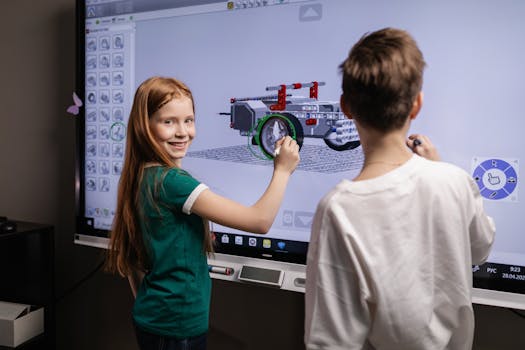
Exploring the Future: Interactive Science and Technology Displays
Takeaways: Interactive science and technology displays are transforming how we learn and engage with scientific concepts. These innovative exhibits provide hands-on experiences that make complex ideas accessible and enjoyable for all ages.
In recent years, museums, science centers, and educational institutions have adopted interactive displays as a core component of their educational strategies. These engaging installations not only captivate visitors but also encourage deeper understanding and appreciation of science and technology. In this article, we will explore the benefits of interactive displays, the various types available, and their future in educational settings.
The Benefits of Interactive Science and Technology Displays

Moreover, interactive displays foster a sense of curiosity and exploration. By allowing visitors to experiment and discover on their own, these exhibits encourage critical thinking and problem-solving skills. This is particularly important in STEM (Science, Technology, Engineering, and Mathematics) education, where students are often required to apply their knowledge creatively.
Another significant benefit is accessibility. Interactive displays can often be adapted for different age groups and learning abilities, ensuring that everyone can participate in the learning process. This inclusivity promotes a broader understanding of science and technology across diverse audiences.
Types of Interactive Displays

- Touchscreens: These displays allow users to navigate through information, videos, and interactive simulations at their own pace. They are commonly found in museums and science centers, providing a wealth of information at visitors’ fingertips.
- Augmented Reality (AR) Exhibits: AR technology overlays digital information onto the real world, enhancing the visitor experience. By using smartphones or AR glasses, users can explore interactive elements that bring scientific concepts to life.
- Virtual Reality (VR) Experiences: VR takes immersion to the next level, transporting users into simulated environments where they can interact with virtual objects and scenarios. This technology is particularly effective for complex subjects like astronomy or human anatomy.
- Hands-On Demonstrations: These exhibits encourage physical interaction, such as building structures, conducting simple experiments, or engaging in collaborative activities. They are often used in educational settings to reinforce concepts learned in the classroom.
- Gamified Learning: Incorporating game elements into exhibits makes learning fun and competitive. Visitors can engage in challenges, quizzes, and interactive games that reinforce scientific principles while enjoying the experience.
The Future of Interactive Science and Technology Displays

One trend to watch is the integration of artificial intelligence (AI) into interactive exhibits. AI can personalize the learning experience by adapting content to individual users’ knowledge levels and interests. This means that no two visitors will have the same experience, making learning more relevant and impactful.
Additionally, as educators recognize the importance of STEM education, we can anticipate more interactive displays in schools and educational institutions. These exhibits will not only enhance classroom learning but also inspire the next generation of scientists and innovators.
Moreover, with the growing emphasis on sustainability and environmental education, we can expect more interactive displays that focus on these themes. Exhibits that educate visitors about climate change, renewable energy, and conservation will play a crucial role in fostering awareness and encouraging action.
Conclusion








